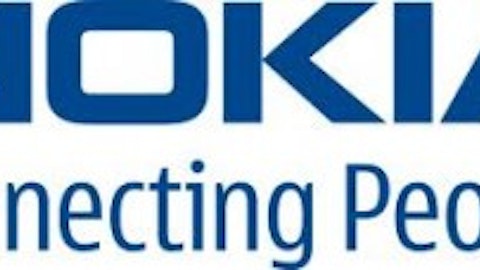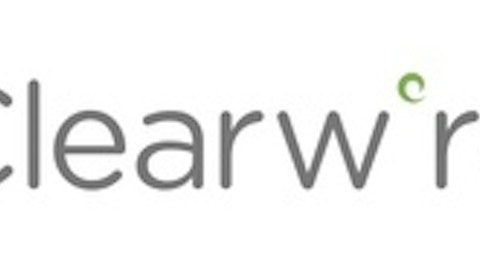
The rise of peer-to-peer payments and lending could cut major financial institutions out of the loop, as customers increasingly let tech or e-commerce companies handle their money instead of banks.
As a result of the rise of e-commerce and ongoing banking crises, “online wallets” are rapidly rising in popularity. According to Deutsche Bank, non-banking structure transactions (such as digital wallets) are projected to rise from 6% to 8% of total financial transactions by the end of 2013.
Let’s take a look at how tech companies, which have firm control of these online wallets, are evolving into the banking industry’s worst nightmare.
Google Inc (NASDAQ:GOOG) recently invested $125 million in peer-to-peer loan site Lending Club, securing a 7% stake in the company. Lending Club is a company that offers loans to customers at significantly lower rates than credit card companies or major financial institutions. The money comes directly from investors, who profit from the interest payments.
Since its inception in 2006, Lending Club has loaned out over $1.65 billion, with $350 million loaned out in the last quarter alone. The company has reported 22 consecutive quarters of positive returns, and expects to issue $2 billion in loans in fiscal 2013 as growth accelerates. It achieved positive cash flow for the first time last year. Meanwhile, Lending Club has used its invested capital to launch several funds over the past two years, which now have combined assets exceeding $450 million.
Google Inc (NASDAQ:GOOG) had to fight hard to nab its 7% stake of the company. Lending Club’s founders didn’t allow Google to directly purchase shares of the privately held company, since no new shares have been issued. Instead, Google had to buy shares from other investors. Google Inc (NASDAQ:GOOG)’s investment, which reportedly would have been more if more equity had been offered, values Lending Club at $1.55 billion. Lending Club is rumored to be preparing for an IPO in 2014.
What does this mean for Google? Since Google already has a PayPal-like payments system, Google Wallet, its investment in Lending Club opens all sorts of exciting payment possibilities. Google Wallet currently needs to be linked to a credit or debit card and its issuing financial institution. With its new partnership, Google Inc (NASDAQ:GOOG) could actually issue its own credit cards which feature Lending Club’s lower interest rates.
In addition to threatening banks, Google could also steal market share away from payment processors and by issuing its own Google Wallet cards. Last November, Google stated that it wanted to issue real plastic cards linked to Google Wallet, which prompted a flurry of speculation that Google Inc (NASDAQ:GOOG) could evolve from the world’s largest search engine into the world’s largest financial institution. Google would likely offer lower merchant transaction fees than Visa or MasterCard, which should be a major concern for these credit card companies and their issuing banks.
eBay
eBay Inc (NASDAQ:EBAY)’s PayPal division is another major threat to banks and credit card companies. In the past, eBay Inc (NASDAQ:EBAY) required a linked bank account to transfer money into its digital payments system. However, PayPal now accepts Green Dot’s MoneyPak, a prepaid card that can be bought at retail locations and used to recharge PayPal accounts.
The acceptance of MoneyPak shows that PayPal is exploring ways to cut banks out of the equation. PayPal actively promotes MoneyPak on its website, telling users that they should use the cards to “avoid interest charges and bank fees.” The company also issues a MasterCard debit card for immediate access to funds deposited in PayPal.
In addition to MoneyPak, PayPal is also attempting to decrease its dependence on Visa and MasterCard, which are often linked to accounts as a payment option. Last year, PayPal introduced its “My Cash” card, a card that can be funded through an online PayPal account. Throughout the year, PayPal has been adding more brick and mortar payment partners, such asHome Depot, Barnes & Noble, and Abercrombie & Fitch, to increase its legitimacy as an alternative payment option.
Last but not least, PayPal’s partnership with Coinstar has changed the latter’s kiosks, best known for changing spare change into paper currency, into ATMs. Not only can customers now deposit their coins directly into their PayPal accounts via these kiosks, but they can also make deposits and withdraw money from their accounts as well.
All of PayPal’s ambitious projects could seriously undermine the growth of traditional financial institutions.
Apple and Amazon
Although Apple Inc. (NASDAQ:AAPL) has been late in entering the payments game, its iTunes and App Store boast an impressive customer base of over 400 million — more than either PayPal or Amazon.com, Inc. (NASDAQ:AMZN). However, Apple’s payments are all linked to credit cards, and its payment transactions are used for digital goods, such as songs, videos and apps, rather than physical ones. To actually set up a dedicated payment system for physical goods, Apple Inc. (NASDAQ:AAPL) will have to expand its support infrastructure significantly.
Nonetheless, Apple Inc. (NASDAQ:AAPL) has patented various payment-related technologies over the past year, which are focused on peer-to-peer payments, wave-to-pay technologies, and fingerprint recognition. This has led to speculation that Apple’s upcoming iPhone 5S could incorporate many of these payment features, including NFC (near field communications) for seamless payments with brick and mortar retailers and peers.
Amazon.com, Inc. (NASDAQ:AMZN), on the other hand, has an extensive payments system linked to its ecosystem, but it requires a linked credit card account. As a testament to its rivalry with Google Inc (NASDAQ:GOOG) and eBay Inc (NASDAQ:EBAY), it does not accept Google Inc (NASDAQ:GOOG) Checkout or PayPal accounts. Although Amazon.com, Inc. (NASDAQ:AMZN) has the size and user base to add an integrated payments solution to rival PayPal, the benefits of adding that service do not outweigh the costs.
In addition, Amazon has shown that it is more interested in spending its revenue elsewhere, on new projects such as TV shows, and products such as its upcoming set-top box. However, there is a hidden threat for Amazon.com, Inc. (NASDAQ:AMZN) – if more brick-and-mortar companies start accepting lower merchant fee payment options such as PayPal and Google Wallet, then they could afford to offer slightly lower prices than Amazon.com, Inc. (NASDAQ:AMZN), which still relies on credit cards.
The bottom line
In the end, big banks and credit card companies need to realize that their era of dominating global payments could be coming to an end. Allowing the tech industry to handle our money instead seems like an attractive, viable alternative for the 21st century, and investors should closely monitor this revolution in the payments industry.
The article The Banking Industry’s Tech Nightmares Are Coming True originally appeared on Fool.com.
Copyright © 1995 – 2013 The Motley Fool, LLC. All rights reserved. The Motley Fool has a disclosure policy.



